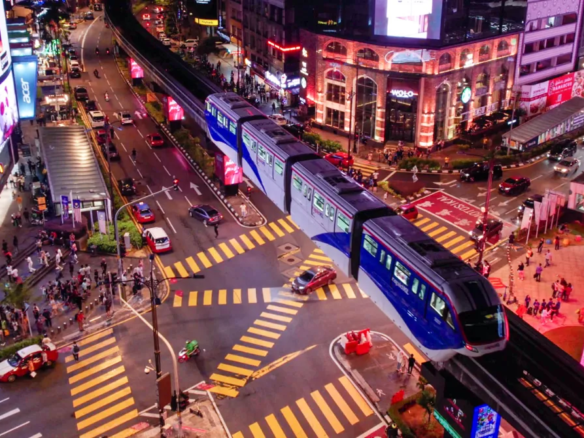Kota Madani: Smart, Inclusive Living Takes Shape in Putrajaya
Malaysia’s administrative capital, Putrajaya, is set to welcome a transformative development that’s more than just bricks and mortar. Kota Madani, a newly announced strategic urban housing project, promises to redefine the standard for sustainable, people-first living—while addressing a pressing national need: housing for civil servants.
With over 17,000 government employees currently on the waiting list for official quarters, the Kota Madani project is more than timely—it’s essential. But the initiative goes further than providing shelter. It aims to create a compact, vertical urban village designed around livability, inclusivity, and long-term sustainability.
For property watchers and infrastructure investors, this development not only enhances the liveability of Putrajaya but signals a rising wave of planned urban communities with strong digital and logistical backbones—especially important as Malaysia gears up its data center and smart city ambitions.
Why Kota Madani Was Launched
According to the Auditor-General’s Report on Putrajaya’s development, only 22,452 of the planned 35,000 government quarters have been built to date. That leaves thousands of civil servants relying on private rentals, often far from their place of work.
To close this gap, the government has launched Kota Madani, a large-scale project involving the construction of 10,000 new government quarters across 102 acres in Precinct 19, Putrajaya. The site was carefully selected to support compact, vertical growth—part of Putrajaya’s original urban plan dating back to 1998.
This isn’t a luxury enclave. It’s a necessity-driven solution, carefully crafted to balance density with dignity, and efficiency with inclusiveness.
Urban Design Rooted in Community and Sustainability
The Kota Madani name itself evokes a vision of progress rooted in values—“Madani” reflecting Malaysia’s broader commitment to compassionate governance and sustainable development.
What sets the project apart is its integration of community-focused facilities:
-
Public schools and childcare centers
-
Mosques and prayer halls
-
Community gyms and recreational spaces
-
Accessible green areas, all within walkable distances
The design is pedestrian-friendly and environmentally conscious, reducing reliance on cars and promoting active, healthy lifestyles. This “vertical kampung” model represents a major evolution in Malaysian housing policy—a blend of density and livability, ideally suited for urban centers like Putrajaya and, increasingly, Kuala Lumpur.
What It Means for Property and Infrastructure Trends
From a real estate perspective, the Kota Madani model reflects a growing preference for smart, integrated urban living. In densely developed markets like KL and Putrajaya, space efficiency, mixed-use zoning, and proximity to digital infrastructure are key differentiators for both public and private developments.
Here’s where the data center trend fits in.
As Malaysia invests heavily in digital infrastructure, including a national framework for data centers, developments like Kota Madani help lay the groundwork for future smart city integration:
-
High-density areas with reliable energy and broadband networks
-
Clusters that can support decentralized data processing hubs
-
Urban designs that align with digital lifestyles and AI-enabled services
Investors looking at Putrajaya today are not just buying into a location—but into the ecosystem of future-ready living.
Civil Service Stability = Real Estate Confidence
Unlike commercial developments tied to market cycles, a project like Kota Madani is backed by government need and policy continuity. Housing civil servants offers a built-in user base and strong tenancy stability.
This signals long-term strength in:
-
Rental demand for properties surrounding government hubs
-
Support services and amenities (from F&B to logistics and co-living options)
-
Secondary property markets serving overflow demand
Moreover, as Putrajaya becomes more digitally connected through smart infrastructure and government-linked tech initiatives, surrounding real estate may appreciate faster than less planned suburbs.
What to Watch Next
The Kota Madani development is still in its early stages, but a few things are already clear:
-
Compact and vertical living will become a planning standard in dense areas
-
Proximity to public facilities and urban connectivity will drive demand
-
Government-linked developments in administrative hubs are stable bets for investors
In time, we can expect similar models to emerge in other federal zones and state capitals, especially where digital infrastructure and civil service employment intersect.
Final Thoughts: A Blueprint for Malaysia’s Urban Future
Kota Madani isn’t just a project—it’s a prototype for how Malaysia can solve modern urban challenges. By combining sustainable housing, integrated public services, and smart planning, it charts a course for inclusive development that benefits citizens and investors alike.
For property players watching Putrajaya’s evolution, this is a space to watch. Whether you’re targeting long-term residential investment, future mixed-use potential, or land near government infrastructure, Kota Madani and its surrounding areas are becoming central to Malaysia’s next urban chapter.
Explore emerging real estate opportunities in Putrajaya and Greater KL—where policy, technology, and people converge.



